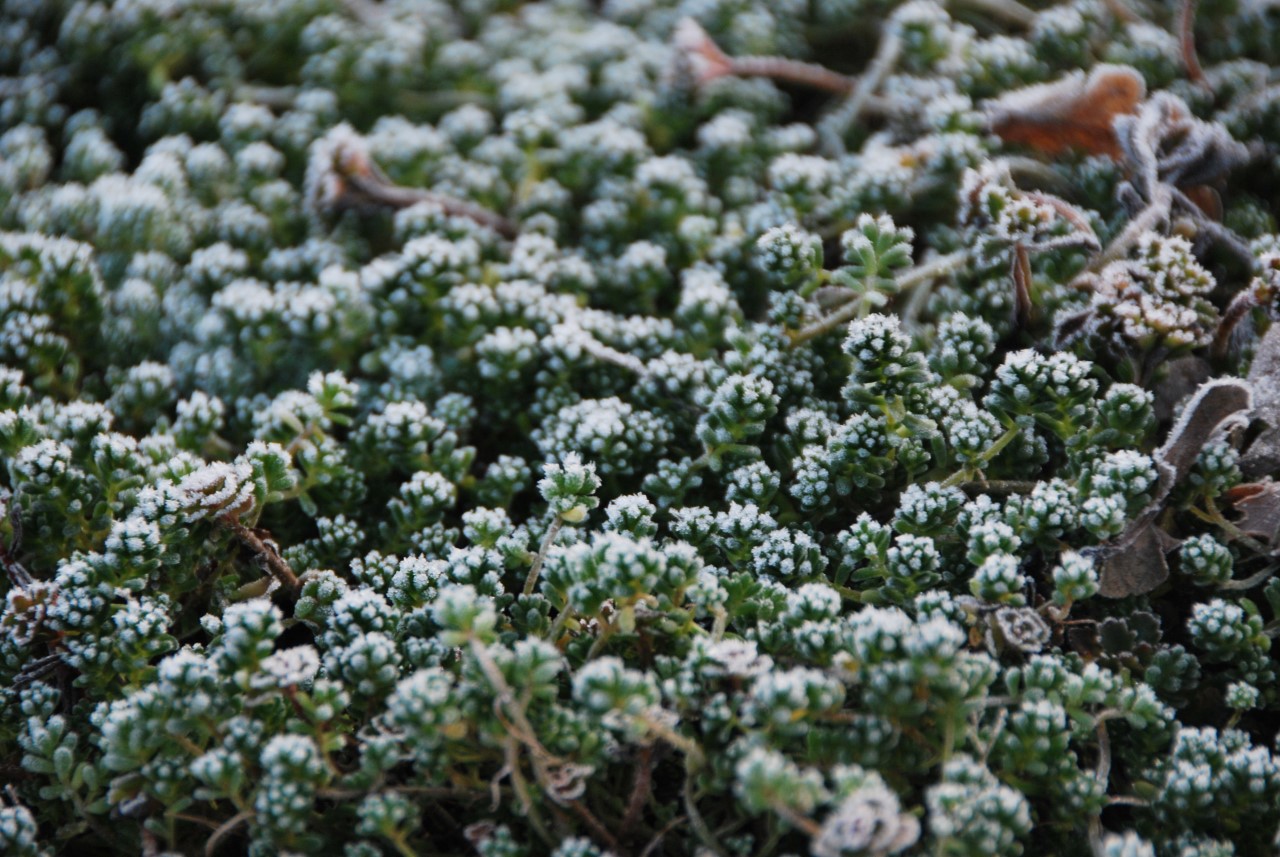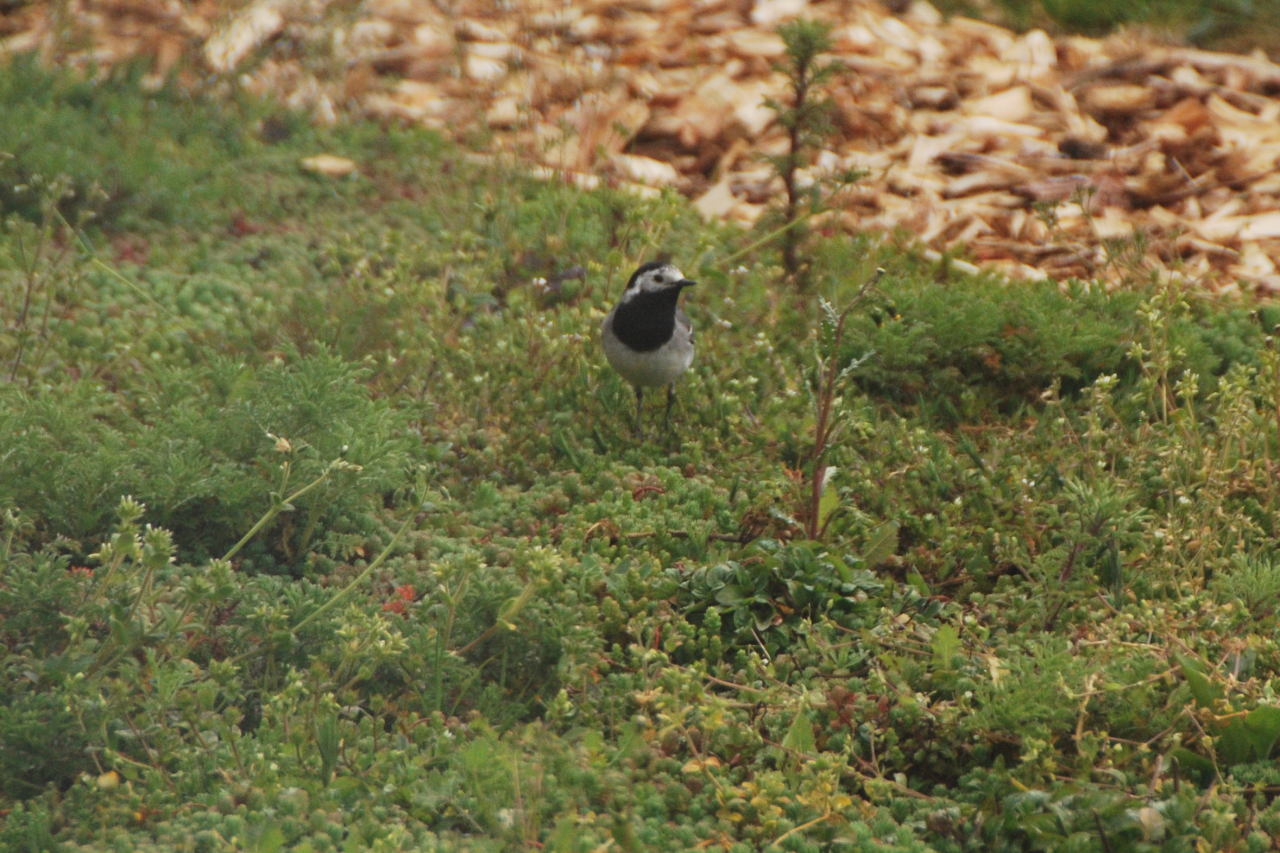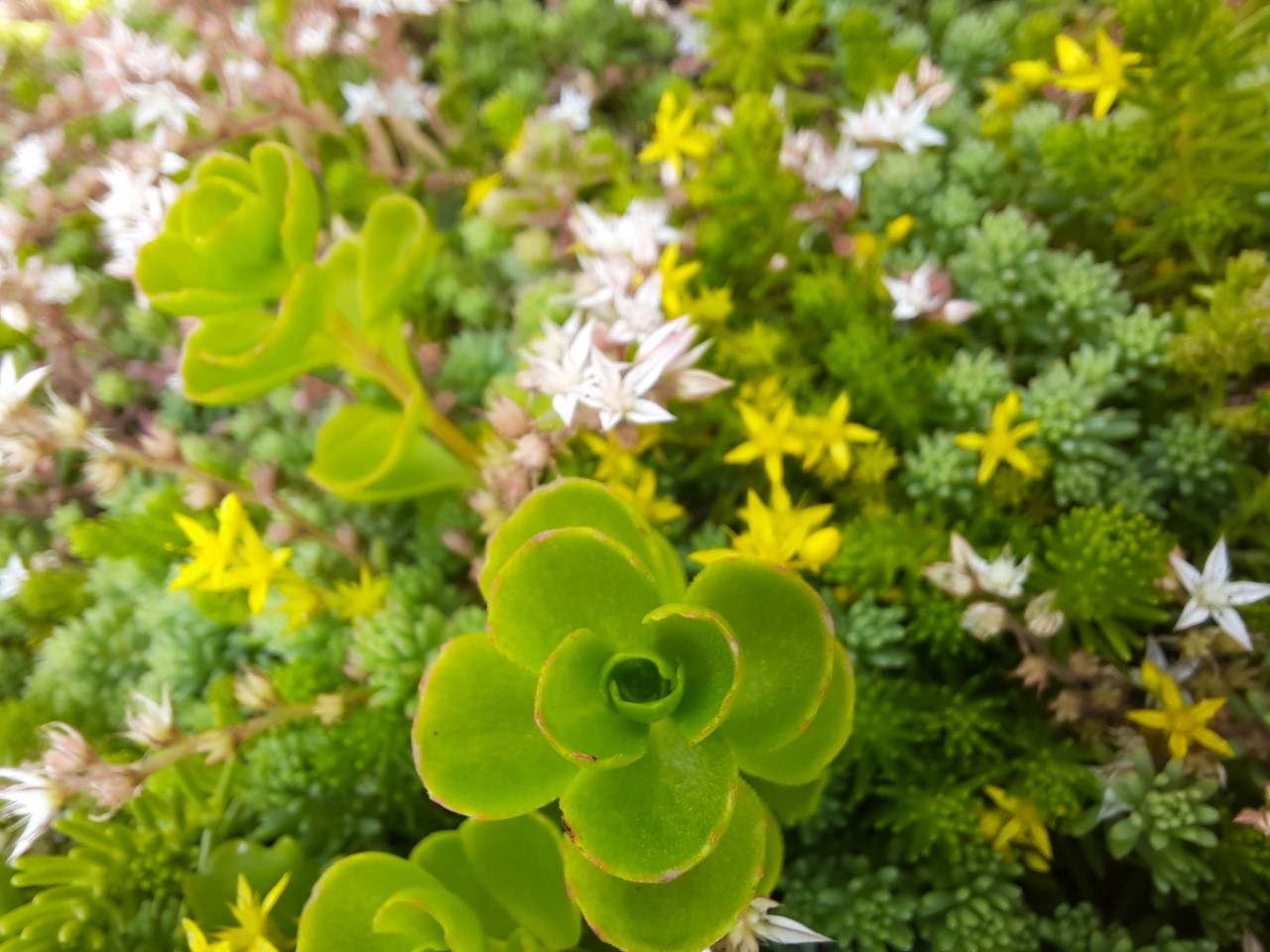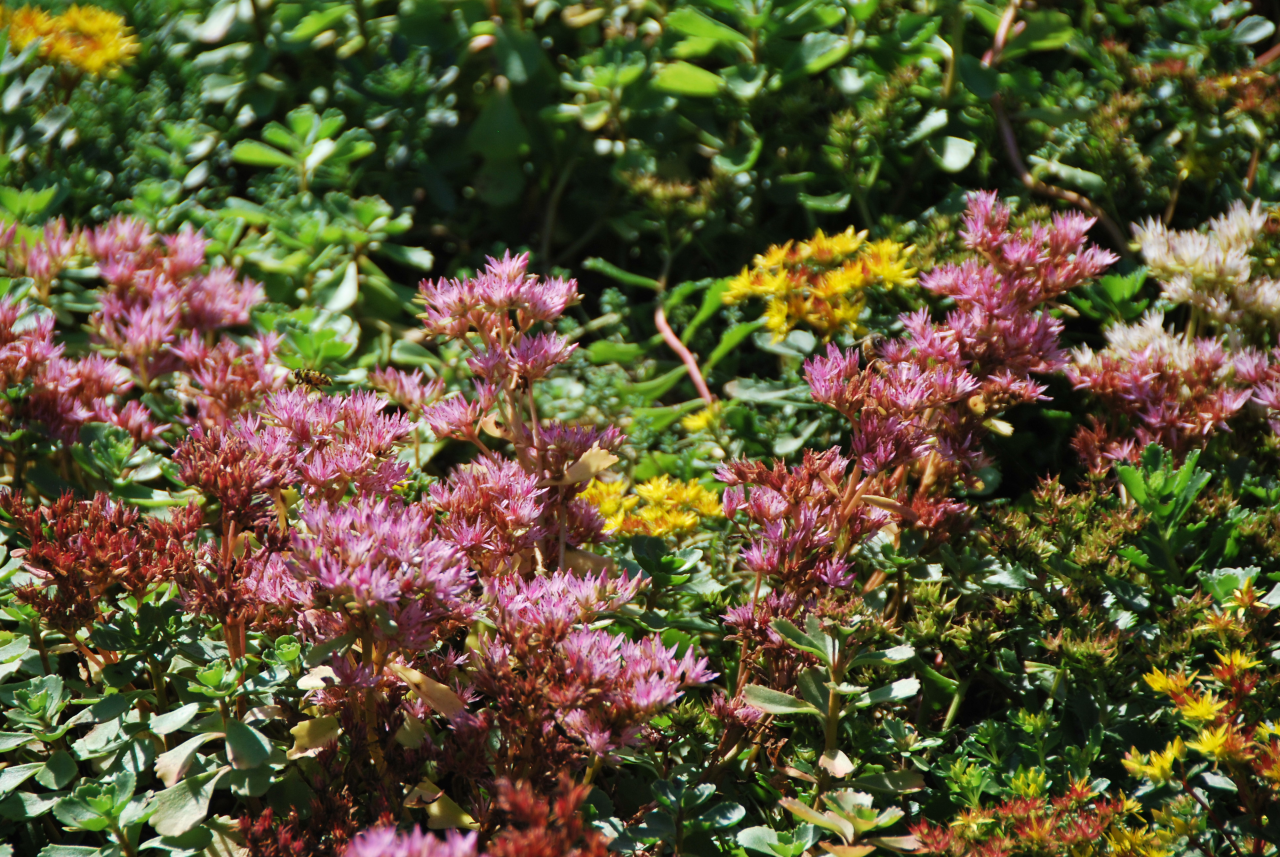4 seasons on one Sedum roof
Posted on Wednesday 26 January, 2022By now, most of us know that there are many advantages to having a Sedum roof. But what’s it like to actually own a Sedum roof and what kind of care does it require? In this article we paint a picture of a green roof with Sedum mats through the seasons, explain when a Sedum roof can be installed and what maintenance is required.
Sedum roof installation: when can it be done?
Before we talk the year in the life of a Sedum roof, the question arises: at what time of the year can a Sedum roof be installed? Actually, this can be done at any time of year, except in the event of prolonged frost. However, during dry periods, and immediately after installation, make sure that the Sedum plants are watered for a few days so that they can recover properly.
Here's what you need to think about when planting a green roof in the winter..
Winter: time for hibernation
It’s winter at the time of writing, so let’s start there. In case of heavy frost, the Sedum plants will endure it well. Sedum is a hardy plant and during this time it will be dormant. This means that the roots of the plants remain inactive until spring. Snow on green roofs is not a problem either. In fact, snow has a positive effect on the Sedum roof by insulating it and providing additional frost protection. It’s also a useful source of water when it starts to thaw.

Spring: from green and fresh to a riot of colours
At the beginning of spring, the green roof still looks fresh and green. If it has been a dry winter, the plants may have a red appearance. This is easily remedied by watering the roof with a sprinkler, garden hose or previously applied irrigation system. Now that winter is over, the Sedum plants need feeding. The best time to fertilise the Sedum plants is at the end of April. Around this time, it’s also advisable to carry out a roof inspection and manually remove any weeds, or leaves that have fallen into the gutter. The first Sedum species start to flower in May. That is when the first pollinating insects arrive on the green roof. Birds also find it a nice place to stay or even build nests in spring.
More information on biodiversity on green roofs can be found here.

Summer: A sea of flowers for bees and butterflies
In the course of summer, you can see that more and more Sedum species start to flower on the green roof. The roof buzzes with bees and is also visited by other pollinators such as hoverflies and butterflies. Water the green roof regularly during long dry periods to prevent the Sedum plants from turning red. This also increases the cooling effect of the green roof on hot days.

Autumn: the best place to catch rain
Even in September, the Sedum roof is visited by bees and other insects in search of nectar. The green roof also has another important function in autumn. When it rains, it catches some of the precipitation. This reduces the burden on the sewer system during rain showers. In preparation for the winter, the green roof is fertilised in early September. A second roof inspection is also recommended at this time. The Sedum plants go dormant in late autumn so that they can flower beautifully again in spring.

Read more about green roof maintenance here.
More information
Do you wish to know more about Sedum roofs through the seasons? Get in touch with our experts. They will be happy to help!
